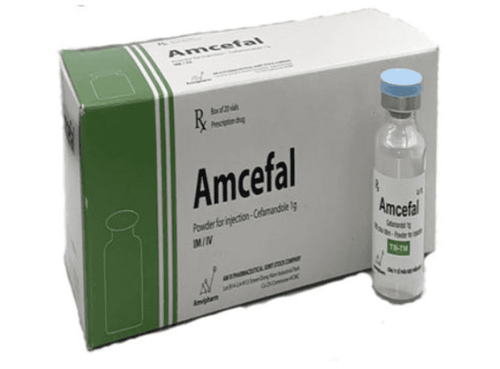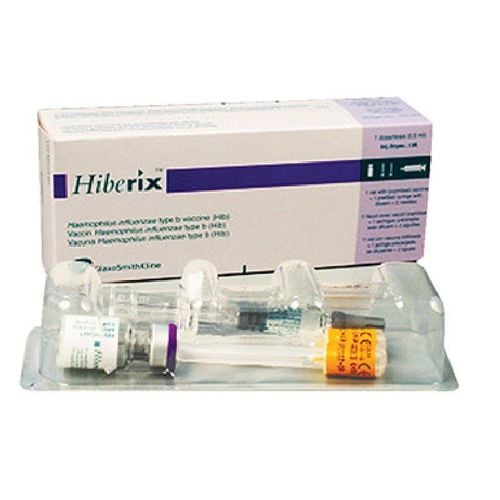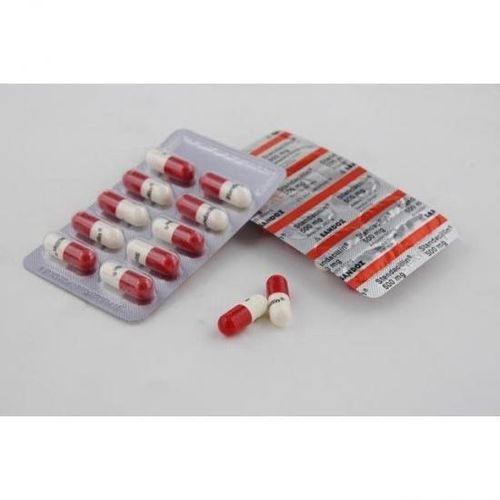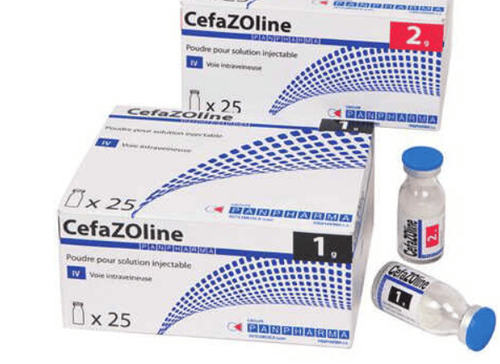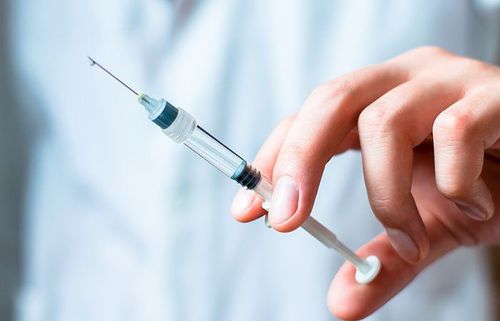This is an automatically translated article.
Haxolim Injection is a drug indicated for people who have problems related to severe infections, when the patient has used conventional antibiotics but are not effective. Patients should learn the basic information about the drug before taking it to ensure the safest and most effective use.
1. What is Haxolim Injection?
Haxolim Injection contains the main ingredient Ceftazidime (in the form of Ceftazidime hydrate) 2g. This is a cephalosporin antibiotic that inhibits the enzymes that synthesize bacterial cell walls to promote effective bactericidal ability. The remarkable feature of Ceftazidime is that it is stable to most bacterial beta-lactamases except Bacteroides enzymes. In addition, this antibiotic is also sensitive to many aminoglycoside-resistant gram-negative bacteria as well as gram-positive bacteria that are resistant to ampicillin and other cephalosporins.
2. Indications and contraindications of Haxolim Injection
2.1. Indications Haxolim Injection is indicated for patients with very severe infections who have been treated with conventional antibiotics but have not responded to limit drug resistance. Specifically, the drug is indicated for people with severe infections caused by sensitive bacteria such as:
Bacteremia, complicated urinary tract, lower respiratory tract. The patient has meningitis. Bone and joint infections, gynecology, abdominal cavity. Skin and soft tissue infections, including burns and wounds. Infection in a person with fever with neutropenia. Patients can start taking Haxolim Injection while waiting for the test results but must stop immediately if the bacteria is diagnosed with drug-resistant bacteria. If the causative organism is unknown, the patient should combine treatment with another antibiotic while waiting for test results. In the case of serious infections that are potentially life-threatening or the patient is immunocompromised, Haxolim Injection is often prescribed with some other antibiotics such as aminoglycosides, vancomycin or clindamycin.
2.2. Contraindications Haxolim Injection is contraindicated in the following cases:
Patients with a history of allergy or hypersensitivity reactions to antibiotics of the Penicillin and Cephalosporin groups. Haxolim Injection is contraindicated for pregnant or lactating women.
3. Dosage and how to use Haxolim Injection
3.1. Dosage For adults:
Haxolim Injection is used in the treatment of infectious diseases with a dose of 1g / time, intravenously or intramuscularly, every 8-12 hours. Patients should be aware that the route of administration and dose is determined by the causative organism, the severity of the disease, and the condition and function of the kidneys. In particular, the highest recommended dose is 6g/day. For patients with severe infections such as meningitis caused by Gram-negative bacteria and other immunocompromised diseases, the recommended dose is 2 g/time, administered every 8 hours. Some severe cases can be used with a dose of 3g / time, every 12 hours, continuously for 3 weeks. Patients with fever and neutropenia use a dose of 100 mg / kg / day divided into 3 times for intravenous injection or 2 g / time for intravenous injection every 8 hours. The drug can be used alone or in combination with another aminoglycoside such as amikacin, gentamicin, tobramycin. For patients with urinary tract infections or milder infections, the dose can be adjusted to 250 - 500 mg/time, every 8 - 12 hours. For prophylactic use, prostatectomy should be administered with Haxolim Injection at a dose of 1 g at the time of anesthesia and repeated if necessary upon removal of the catheter. For children under 12 years of age
Usual dose: Infants from 1 to 4 weeks of age: 30mg/kg IV every 12 hours. Children from 1 month to 12 years old dose 25-50 mg/kg every 8 hours, the maximum dose is 6g/day. Children with meningitis: Children from birth to 7 days old use a dose of 100-150 mg/kg/day divided into 2-3 times. Newborns > 7 days old receive Haxolim Injection at a dose of 150mg/kg/day divided into 3 times. Children with fever and neutropenia: Children 2 years of age and older use a dose of 50 mg/kg (maximum 2 g), every 8 hours. Haxolim Injection dosage for some other subjects
People over 70 years old: Need to reduce to only 1/2 dose of normal people, maximum 3g/day and time between each dose at least 12 hours apart . Patients with impaired renal function: Adjust dose based on creatinine clearance. Patients with renal impairment: Start dose at 1 g then change dose (maintenance dose) depending on creatinine clearance. Patients on hemodialysis: Use an additional 1g at the end of each dialysis session. Patients on continuous dialysis: Use an additional 1g/day, use 1 time or divided into several times. Patients undergoing peritoneal dialysis: Start with a dose of 1 g, followed by another 500 mg dose 24 hours apart. 3.2. How to use Haxolim Injection is used for intravenous infusion or deep intramuscular injection in the upper quadrant of the buttocks or the lateral part of the thigh.
4. Side effects when using Haxolim Injection
Haxolim Injection has a risk of causing some side effects such as swelling at the injection site, itchy rash, diarrhea, nausea, vomiting and abdominal pain.
5. Be careful when using Haxolim Injection
Patients who have had cross-reactions between penicillins and cephalosporins should be cautious when using the drug. The use of Haxolim Injection in the treatment of disease has the potential to reduce prothrombin activity in patients with renal/liver failure or malnutrition. Use caution when using Haxolim Injection in patients with a history of gastrointestinal disease, especially dysentery. Above is some reference information about Haxolim Injection. You need to pay attention to the correct use of the drug to treat the disease effectively and safely.
Please dial HOTLINE for more information or register for an appointment HERE. Download MyVinmec app to make appointments faster and to manage your bookings easily.





